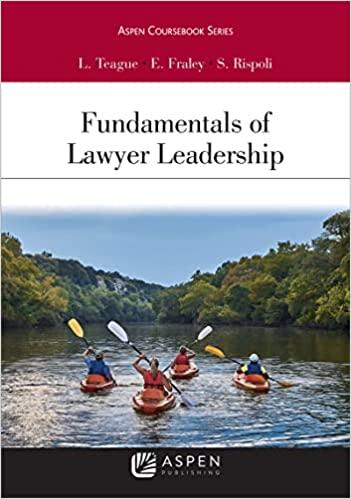Question
Between August 1967 and July 1969, Hodge E. Mason created and published 118 real estate ownership maps that, together, cover all of Montgomery County, Texas.
Between August 1967 and July 1969, Hodge E. Mason created and published 118 real estate ownership maps that, together, cover all of Montgomery County, Texas. The maps, which display copyright notices, pictorially portray the location, size, and shape of surveys, land grants, tracts, and various topographical features within the county. Numbers and words on the maps identify deeds, abstract numbers, acreage, and the owners of the various tracts. Mason obtained the information that he included on the maps from a variety of sources. Relying on these sources, Mason initially determined the location and dimensions of each survey in the county, and then drew the corners and lines of the surveys onto topographical maps of the county that were published by the United States Geological Survey (USGS).
He then determined the location of the property lines of the real estate tracts within each survey and drew them on the USGS maps. Finally, Mason traced the survey and tract lines onto transparent overlays, enlarged clean USGS maps and the overlays, added names and other information to the overlays, and combined the maps and overlays to print the final maps.
At the trial, Mason testified that he used substantial judgment and discretion to reconcile inconsistencies among the various sources, to select which features to include in the final map sheets, and to portray the information in a manner that would be useful to the public. From 1970 to 1980, Mason revised the original maps and eventually published 115 new maps with copyright notices, for a total of 233 maps. Mason sold copies of his maps individually and in sets.
Mason's infringement claims are based on the defendants' use of his maps as part of a geographical indexing system that Landata created to continuously organize and store ever-changing title information on each tract in Montgomery County. To create this sytem, Landata [went to a retail outlet] and purchased a set of Mason's maps then reorganized them by cutting and pasting them into 72 map sheets. Landata then attached a transparent overlay to each of the 72 sheets, and depicted on these overlays numerous updates and corrections to the information on Mason's maps.
In order for a work to earn a copyright certain elements must be shown. In this instance the facts ask you to determine if the amount and type of effort Mason put into his work will warrant granting him a copyright. Or in other words has he gone beyond the idea or facts?
The appellate court that determined this case said that he did put in enough effort for a copyright. Here is what the appellate court's opinion stated: In Feist, the [U. S. Supreme] Court held that the defendant, who copied a list of names, towns, and telephone numbers from the white pages of the plaintiff's telephone directory, did not copy anything that was "original" to the plaintiff. Id. at 1296. The Court explained that the plaintiff's selection of facts to publish--the name, town, and telephone number of each person who applied for telephone service--"lacks the modicum of creativity necessary to transform mere selection into copyrightable expression." Id. And the plaintiff's arrangement of these facts, which involved "nothing more than list[ing] ... [the] subscribers in alphabetical order," is "not only unoriginal, it is practically inevitable." Id. at 1297. Because the plaintiff "simply [took] the data provided by its subscribers and list[ed] it alphabetically by surname ..., [t]he end product is a garden-variety white pages directory, devoid of even the slightest trace of creativity." Id. at 1296. But the evidence in this case [Mason v. Montgomery] demonstrates that Mason exercised sufficient creativity when he created his maps. In his deposition and affidavit, Mason explained the choices that he independently made to select information from numerous and sometimes conflicting sources, and to depict that information on his maps. [Footnote 10] Mason's compilation of the information on his maps involved creativity that far exceeds the required minimum level.
The lower court (trial court) ruled the opposite namely that: [t]o extend copyright protection to the Hodge Mason maps, which resulted from facts essentially in the public domain, would give the plaintiffs a monopoly over the facts. In other words, anyone who has the desire and ability to correctly interpret the legal descriptions and toil through the factual information relied upon by the plaintiffs in creating their maps, would create a pictorial presentation so substantially similar to the plaintiffs['] that they could be accused of copyright infringement. This result would clearly upset Congress' intent to balance the "competing concerns of providing incentive to authors to create and of fostering competition in such creativity." Id. at 356 (quoting Apple Computer, Inc. v. Franklin Computer Corp., 714 F.2d 1240, 1253 (3rd Cir.1983), cert. dismissed, 464 U.S. 1033, 104 S.Ct. 690, 79 L.Ed.2d 158 (1984)). The court thus concluded that "the plaintiffs' idea to create the maps, based on legal and factual public information, is inseparable from its expression embodied within the maps, and hence not subject to copyright protection." Id. HODGE E. MASON and HODGE MASON MAPS, INC. v. MONTGOMERY DATA, INC., ET AL.
Here are links to the case:
https://www.leagle.com/decision/19911118765fsupp35311057 (trial court opinion)
https://coolcopyright.com/contents/chapter-2/mason-v-montgomery-data
(appellate court opinion)
With which Court do you agree -appellate court or the trial court? Explain your reasons? [Hint: look at the issue of originality]
Step by Step Solution
There are 3 Steps involved in it
Step: 1

Get Instant Access to Expert-Tailored Solutions
See step-by-step solutions with expert insights and AI powered tools for academic success
Step: 2

Step: 3

Ace Your Homework with AI
Get the answers you need in no time with our AI-driven, step-by-step assistance
Get Started


